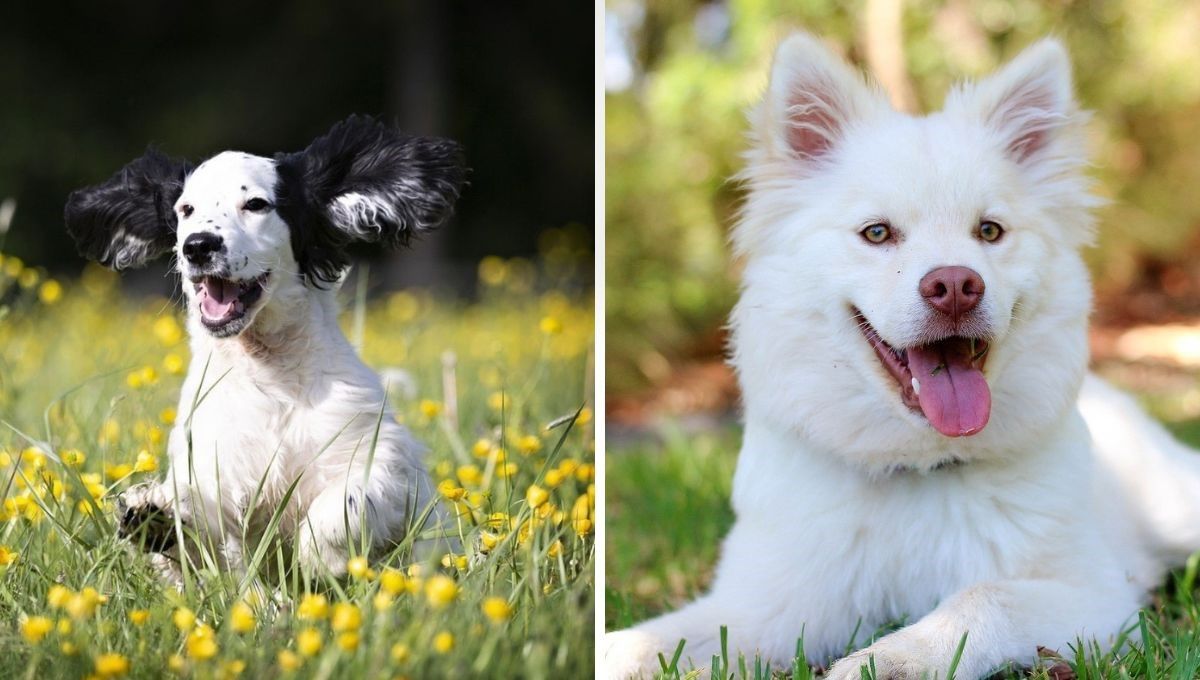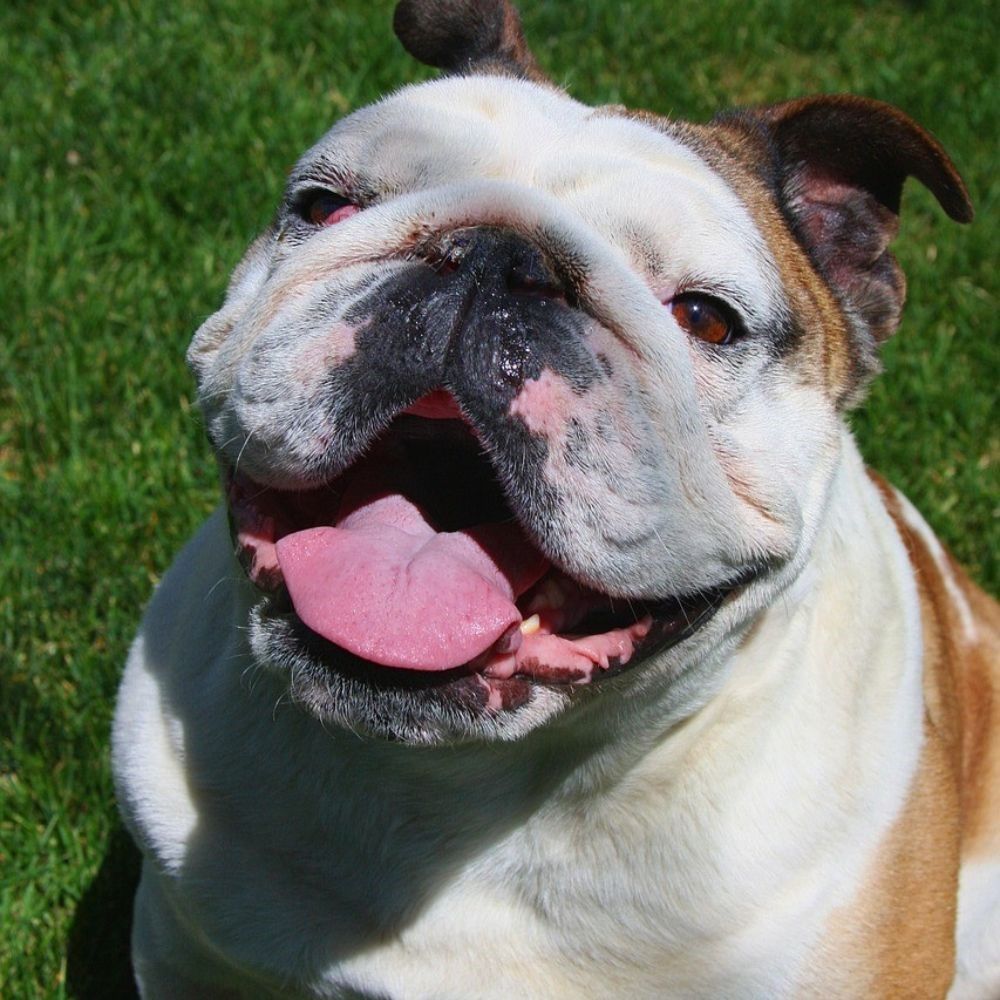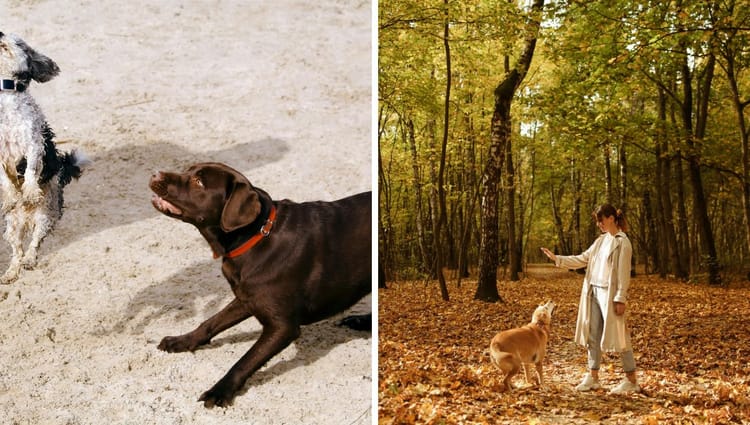Why Dogs Wag: The Tail of Canine Emotion!

Dogs are known for their expressive body language, and one of the most iconic and universally recognized canine behaviors is tail wagging. It's a heartwarming sight that can instantly put a smile on our faces, but have you ever wondered why dogs wag their tails and what their tail movements mean?
In this blog post, we'll delve into the fascinating world of tail wagging and uncover the hidden messages behind this tail-telling behavior.
The Anatomy of a Dog's Tail
Before we dive into the reasons why dogs wag their tails, it's essential to understand the anatomy of a dog's tail. Dogs come in various shapes and sizes, and so do their tails.
A dog's tail consists of several bones, muscles, and nerves that allow for a wide range of movements. The tail's position and the way it moves convey a dog's emotions and intentions, making it a valuable tool for communication.
Reasons Why Dogs Wag Their Tails
Happiness and Excitement: The most common reason for tail wagging is happiness and excitement. When a dog is genuinely delighted to see you or is enjoying a fun activity, their tail may wag vigorously.
This joyful tail movement is often accompanied by other signs of happiness, such as a relaxed body posture, perked-up ears, and a big, goofy grin.
Social Interaction: Dogs are social animals, and they use their tails to communicate with other dogs and humans. When a dog approaches another dog in a friendly manner, a wagging tail can signal their intentions to play or interact.
Similarly, when a dog greets a person with a wagging tail, it's a sign of friendliness and social engagement.
Curiosity and Interest: Dogs may also wag their tails when they are curious or interested in something. If your dog sees a new object, smells an intriguing scent, or hears an unfamiliar noise, they might wag their tail while investigating.
This type of tail wagging is often slow and cautious, indicating a more reserved form of curiosity.
Nervousness and Anxiety: Tail wagging isn't always a sign of happiness. Dogs may also wag their tails when they are nervous or anxious.
In such cases, the tail may wag more slowly and be held lower than usual. This can be a way for the dog to signal discomfort or uncertainty in a situation.
Dominance and Aggression: In some instances, a dog may wag their tail while displaying dominant or aggressive behavior. It's important to note that the context and other body language cues are crucial for interpreting this type of tail wagging.
A high, stiff tail with rapid wagging can be a sign of dominance or aggression and should be approached with caution.

Understanding Tail Positions
The position of a dog's tail can provide valuable insights into their emotional state. Here are some common tail positions and what they typically mean:
- High Tail: A tail held high signifies confidence and alertness. It often accompanies a dog's excited or happy demeanor.
- Mid-Level Tail: A tail held at a medium level indicates relaxation and contentment. This is the typical position for many dogs when they are in a calm and comfortable state.
- Low Tail: A tail held low suggests submission, nervousness, or anxiety. Dogs may lower their tails when they feel threatened or unsure.
- Tucked Tail: When a dog tucks their tail between their hind legs, it's a sign of fear or extreme submission. This is often seen in dogs that are scared or have had negative experiences.
Conclusion
A wagging tail is a window into a dog's emotions and intentions. By paying attention to the speed, direction, and position of the tail, we can gain valuable insights into our furry friends' feelings.
However, it's essential to remember that tail wagging should always be considered in conjunction with other body language cues and the overall context to accurately interpret a dog's state of mind.
So, the next time you see a dog wagging its tail, take a moment to observe and appreciate the beautiful language of canine communication.

Why Do Some Dogs Smile While Others Don't: Unveiling the Canine Grin
Have you ever noticed that some dogs seem to wear a perpetual grin, while others maintain a more stoic expression? If you've ever wondered why some pups smile and others don't, you're not alone.
This intriguing phenomenon has captured the curiosity of dog lovers for ages. In this blog post, we'll delve into the fascinating world of canine expressions to uncover the reasons behind these variations in doggy smiles.
The Anatomy of a Dog's Smile
Before we explore the reasons why some dogs smile, it's essential to understand what constitutes a canine smile. A dog's smile typically involves an open mouth, often revealing the tongue, and a relaxed facial expression.
However, this expression can vary widely among individual dogs due to a combination of genetics, breed traits, and learned behaviors.
Genetics and Breed Variations
One significant factor contributing to whether a dog smiles or not is their genetics and breed. Some breeds are more prone to having naturally upturned mouths or expressive faces, which can make them appear to be smiling.
Breeds like the Siberian Husky, Alaskan Malamute, and Belgian Malinois are known for their striking, seemingly smiling facial expressions. On the other hand, breeds like the Bullmastiff or Bloodhound tend to have more droopy or solemn faces.
Personality and Temperament
A dog's temperament and personality can also influence whether they appear to smile. Happy-go-lucky and playful dogs often exhibit more pronounced smiles because they are naturally expressive and joyous.
Dogs with more reserved or serious temperaments might not display smiles as frequently, but that doesn't mean they aren't content or happy in their own way.
Learned Behaviors
Dogs are remarkably perceptive animals that can pick up on human cues and behaviors. Some dogs learn to smile or mimic human facial expressions as a way to please their owners or gain attention. This learned behavior can give the impression that a dog is smiling, even if it's not their natural expression.
Individual Differences
Just like humans, each dog is unique and has its own way of expressing emotions. Some dogs may have a naturally happy and expressive demeanor, while others may be more reserved.
It's essential to remember that a lack of an overt smile doesn't necessarily indicate unhappiness or discomfort in a dog.

Conclusion
In the world of canine expressions, there's no one-size-fits-all answer to why some dogs smile while others don't. Genetics, breed traits, personality, learned behaviors, and individual differences all play a role in determining a dog's facial expressions.
What's most important is to understand and appreciate your dog's unique personality and how they communicate their emotions, whether through a beaming smile or a more subtle expression of contentment.
Regardless of their facial expression, the bond between you and your furry friend remains a heartwarming testament to the beautiful connection shared between humans and dogs.





